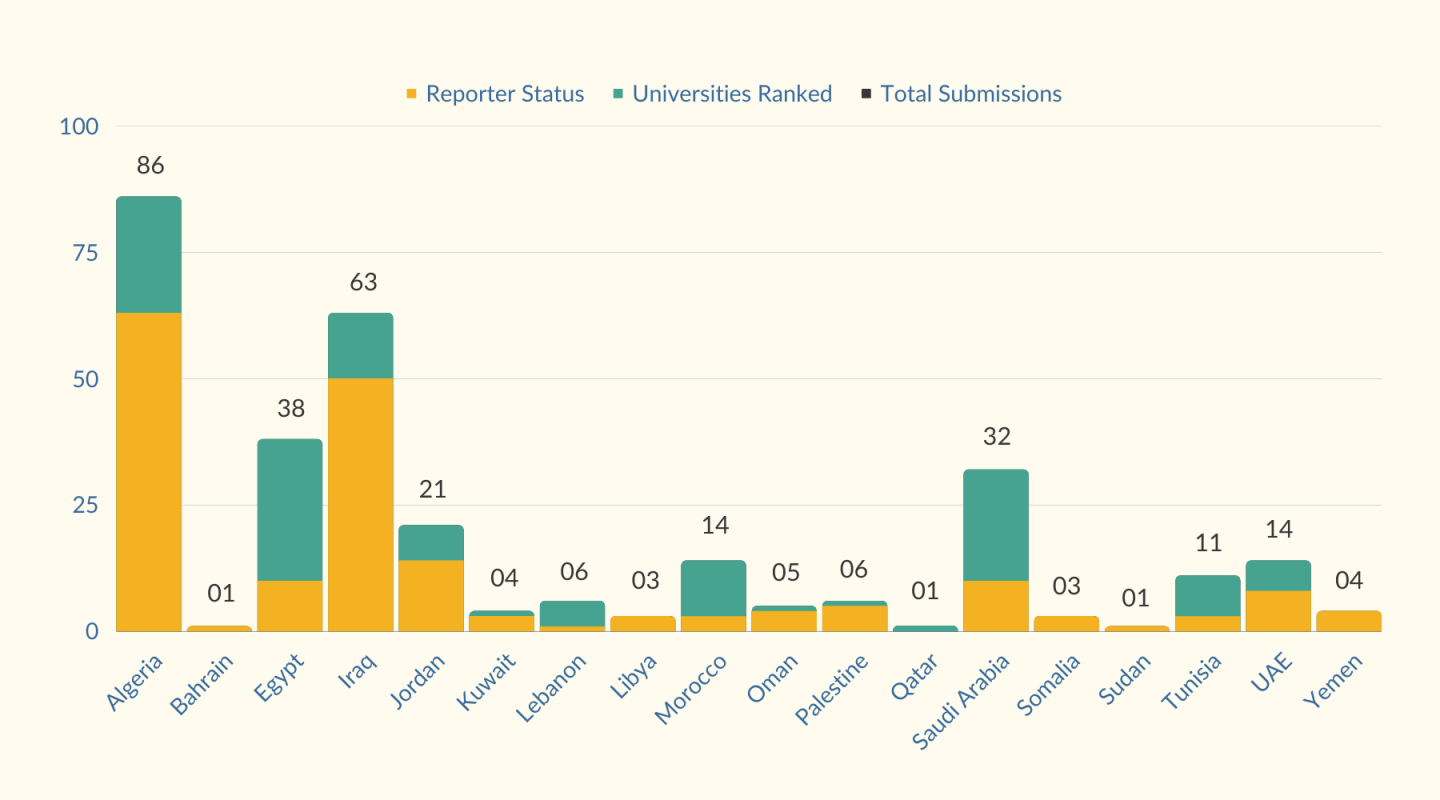
When the first Times Higher Education (THE) World University Rankings table (2004) was published, it only featured 200 universities from 29 countries. This year’s much-anticipated World University Rankings (2024) encompasses 1,904 universities, across 108 countries and regions. The scores were based, in part, on a rigorous analysis of over 134 million citations derived from 16.5 million research publications, as well as insights from a global community of 68,402 scholars. While 1,904 institutions ultimately made it to the final charts, hundreds of thousands of datapoints from 2,673 institutions were analysed for this ranking alone.

What’s New with the Top Ten?
While British and American universities continue to dominate this year’s top ten rankings, the competition among universities remains as intense as ever. Much like last year, seven universities from the United States and three universities from the United Kingdom made it to the top ten chart. Perhaps unsurprisingly, Oxford University retained its position as the top-ranked institution for the eighth consecutive year, maintaining its prestigious standing with a total score of 98.5. Stanford University from the United States secured the second position, with a score of 98.0. Following closely, the Massachusetts Institute of Technology (MIT) ascended to the third position with a total score of 97.9, marking a notable rise from its previous fifth place standing. Harvard University, which held the second position in 2023, experienced a slight drop to fourth place in the current ranking, achieving a total score of 97.8.
The University of Cambridge, dropped two spots to fifth place this year, securing a total score of 97.5. Princeton University, which held the sixth position in 2023, also experienced a slight decline, now securing the seventh spot, with a score of 96.9. Meanwhile, the California Institute of Technology seems to have switched ranks with Princeton University, rising from seventh place in 2023 to sixth place in 2024 and boasting a score of 96.5. Imperial College London showcased a notable ascent, transitioning from the 10th position in 2023 to the eighth slot in 2024 while achieving a commendable score of 95.1. Conversely, the University of California, Berkeley, experienced a decline, sliding from the eighth spot in 2023 to the ninth position in 2024, with a score of 94.6. Finally, Yale University encountered a marginal downturn, moving from the ninth position in 2023 to the 10th spot in 2024, with a total score of 94.2.
The top ten scores for 2024 showcase a discernible upward trend compared to the preceding year. The average score for the top ten universities in 2024 – reaching 96.36 – is notably higher than the average score of 93.4 in 2023. This substantial increase signifies an overall enhancement in the academic performance, with institutions striving to surpass previous benchmarks and fortify their positions on the global stage. These differences reflect the dynamic nature of academic excellence and the global competitiveness of these renowned institutions.

Universities with Reporter Status
As many as 769 institutions submitted their data but did not meet the criteria for ranking and were therefore listed as having a reporter status. THE did not always feature universities under this designation, but only started adopting this practice a few years ago. The first recognition of reporter universities in THE World University Rankings occurred with the release of the 2022 edition. Since then, universities dedicating time and effort to provide the extensive data requested by THE are acknowledged for their commitment and assistance. Despite rigorous exclusion criteria, many university submissions are just a few steps or adjustments away from securing a place in the rankings, making them deserving of mention as they strive to achieve a rank. The continuously increasing number of universities listed under reporter status, in addition to the expansion in the representation of institutions from various territories, is proof that the interest in the rankings is unmistakably on the rise.

World University Rankings – Methodology 3.0
The methodology of the recently released 2024 Times Higher Education World University Rankings has undergone a substantial transformation compared to the preceding year. The assessment now incorporates a total of 18 metrics, a noteworthy expansion from the previous thirteen, signifying a heightened granularity in the ranking evaluation process.
The performance indicators remain classified into five overarching groups:
– Teaching, weighing a good 29.5%;
– Research Environment similarly at 29%;
– Research Quality – previously ‘Citations’ – which has witnessed the biggest change this year and covers three new metrics (including Citation Impact): Research Strength, Research Excellence, and Research Influence. Total weight of this group is 30%.
– Industry, with ‘Patents’ as a new metric, has the least weight of all performance indicator groups at 4.0%.
– International Outlook, which has a total weight of 7.5% remains unchanged for this year’s ranking, but with a new metric, ‘Studying Abroad’, being added next year.
It’s important to mention that the ratios of last year’s metrics have been adjusted to accommodate the weights of the new metrics.

Most Represented Countries and New Entrants
Once again, the United States asserts its dominance with the highest representation—169 institutions overall and 56 in the top 200. This comes alongside an improvement in the average score of the top five US universities.
The compilation of the most represented countries remains largely the same, with Australia, Canada, Germany, Japan, the Netherlands, Sweden, and Switzerland each securing an additional university within the top 200. China, on the other hand, gained two more institutions on this list. Notable reductions occurred in representation for Germany (down by 1), the United Kingdom (down by 3), and the United States (down by 2). The sole addition to this list, Japan, now boasts five universities within the top 200, a significant increase from two last year.
India emerges as a formidable player, clinching the fourth position among the most-represented nations – though none of its universities made it to the top 200. It claims 91 spots, surpassing China, which has dipped slightly to 86. China, edging towards the top 10, achieves a milestone with two institutions entering the top 15 for the first time, indicative of its ascending influence globally.
Turning to the new entries this year, Italy’s Catholic University of the Sacred Heart makes a significant debut in the 301-350 bracket. This year’s rankings introduce four new nations, all European —Kosovo, Bosnia and Herzegovina, North Macedonia, and Armenia. This shift marks a departure from the previous year, which only featured African nations among the newcomers, signalling a dynamic evolution in the international educational sphere.

Arab Countries – What’s Changing?
Arab universities claiming positions within the top 500 this year hailed exclusively from the Gulf region. Notable institutions from Qatar, Saudi Arabia, and the United Arab Emirates have made their mark:
– [251-300] Qatar University – Qatar
– [201-250] King Fahd University of Petroleum and Minerals – Saudi Arabia
– [251-300] King Abdulaziz University – Saudi Arabia
– [401-500] Imam Mohammad Ibn Saud Islamic University – Saudi Arabia
– [401-500] King Saud University – Saudi Arabia
– [401-500] Prince Sultan University – Saudi Arabia
– [201-250] Abu Dhabi University – United Arab Emirates
– [251-300] Khalifa University – United Arab Emirates
– [301-350] United Arab Emirates University – United Arab Emirates
– [351-400] University of Sharjah – United Arab Emirates
– [401-500] Zayed University – United Arab Emirates
Particularly notable among these universities is the University of Sharjah from the United Arab Emirates. Beyond its placement within the top 500, the institution excelled by attaining the first position globally for the International Outlook indicator, earning a near perfect score of 98.8. Furthermore, it secured the 62nd position worldwide for Research Quality.
Several other Arab universities also performed commendably in the International Outlook indicator, with Abu Dhabi University (UAE) ranking ninth globally, Al Faisal University (Saudi Arabia) at 11th, Khalifa University (UAE) at 17th, and Qatar University (Qatar) at 31st.
A remarkable trend across Arab universities is the evident surge in interest, reflected in an increased number of institutions listed under reporter status compared to previous years. This trend is also observable across universities worldwide but seems more pronounced within Arab universities. We hope that this signifies a greater representation of Arab universities in future rankings.
Sources:
Times Higher Education – World University Rankings 2024
World University Rankings 2024 – 20th Edition
World University Rankings 2024 – China Creeps Closer to Top 10
World University Rankings 2024 – Digital Edition
World University Rankings 2024 – Methodology
Times Higher Education – Why We Are Including Reporter Institutions
Times Higher Education – World University Rankings 2023



